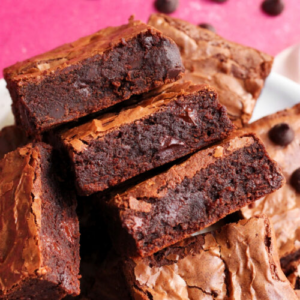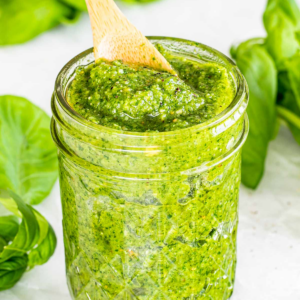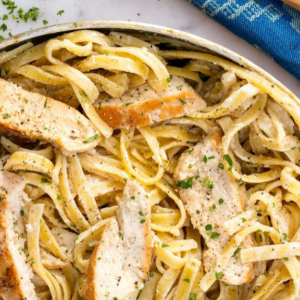Table of Contents
What is a Lasagna Recipe? Lasagna is a dish renowned for its rich layers and heartwarming flavors, is a staple in Italian cuisine and a favorite worldwide. This guide is dedicated to unraveling the secrets behind the perfect lasagna recipe. From selecting the finest ingredients to mastering the art of layering, we’ll take you through every step to ensure your lasagna is not just a meal, but a culinary masterpiece.
A Brief History of Lasagna
Lasagna’s journey began in ancient Italy. Originally a simple dish, it has evolved over centuries into the layered delicacy we know today. Each region in Italy offers its own twist on this classic, from the meaty Bolognese to the vegetable-packed versions of the south. This diversity is a testament to lasagna’s enduring popularity and adaptability.
Lasagna Recipe
Choosing Your Ingredients
The magic of a great lasagna recipe starts with its components. Opt for fresh, high-quality ingredients for the best results. Key elements include:
- Pasta: Traditional lasagna noodles or thinner, no-boil sheets.
- Cheese: A mix of ricotta, mozzarella, and Parmesan for richness and depth.
- Sauce: A hearty, simmered tomato sauce, perhaps with a Bolognese or vegetarian twist.
- Meat: Ground beef, pork, or a vegetarian substitute.
- Vegetables: Spinach, zucchini, or mushrooms for added nutrition and flavor.
Essential Equipment for Lasagna Making
You’ll need a few basic tools: a deep baking dish, a large pot for sauce, a skillet for meat, and utensils for layering. An oven-proof dish is key, as it will need to withstand high baking temperatures.
Step-by-Step Lasagna Recipe
- Prepare the Sauce: Cook your meat or vegetables, then simmer with tomatoes, herbs, and spices.
- Boil the Pasta: If using traditional noodles, boil until al dente. No-boil noodles can be used directly.
- Mix the Cheeses: Blend ricotta with eggs, Parmesan, and seasoning for a creamy layer.
- Layer Your Lasagna: Start with sauce, then pasta, the ricotta mixture, mozzarella, and repeat. Finish with a layer of noodles topped with sauce and cheese.
- Bake: Cook in a preheated oven until bubbling and golden.
Tips for Perfect Layering and Baking
The secret to a great lasagna recipe lies in the layering. Ensure each layer is evenly spread and not too thick. Baking times vary, but generally, lasagna bakes for about 45 minutes at 375°F (190°C). Let it rest for a few minutes before serving for easier slicing.
Lasagna is wonderfully versatile. Experiment with different fillings like seafood, pesto, or various cheeses. Gluten-free and low-carb versions can be made using sliced vegetables instead of pasta sheets.
Nutritional Information and Dietary Considerations
Lasagna is a popular Italian dish known for its rich flavors and hearty ingredients. Here’s a general overview of the nutritional information for a typical serving of lasagna, along with some dietary considerations:
Nutritional Information (per serving, approximations):
- Calories: Lasagna can be quite calorie-dense, with a typical serving containing around 350 to 550 calories, depending on the ingredients used.
- Protein: A good source of protein, typically from the cheese and meat, with around 20-30 grams per serving.
- Fat: High in fat, especially saturated fat, due to cheese and meat, with totals often ranging from 15-25 grams.
- Carbohydrates: Primarily from pasta and sauce, a serving may contain 30-50 grams of carbohydrates.
- Fiber: Moderate, depending on the amount of vegetables used in the sauce, typically around 2-5 grams.
- Sodium: Can be high, often exceeding 700 mg per serving, particularly if processed meats or high-sodium cheeses are used.
Dietary Considerations:
- Caloric Density: Lasagna is a high-calorie meal, which might be a concern for those on calorie-restricted diets.
- Gluten: Traditional lasagna uses wheat pasta, which is not suitable for those with gluten intolerance or celiac disease. Gluten-free pasta alternatives are available.
- Dairy: High in dairy, so not suitable for lactose intolerant or vegan diets. Dairy-free cheese substitutes can be used.
- Meat: Often contains beef, pork, or chicken, which might not align with vegetarian or certain dietary restrictions. Vegetarian lasagnas with plant-based proteins are an alternative.
- Saturated Fat: Contains a significant amount of saturated fat, which can be a concern for heart health. Choosing leaner meats and low-fat cheeses can help reduce this.
- Carbohydrates: High in carbs, so it may not be suitable for low-carb diets like Keto. Using low-carb pasta alternatives can help.
- Sodium: Can be high in sodium, especially when using canned sauces or processed meats. Homemade sauce and fresh ingredients can help control sodium levels.
Tips for Healthier Variations:
- Use lean meats like ground turkey or chicken.
- Incorporate more vegetables like spinach, zucchini, or mushrooms for added nutrients and fiber.
- Opt for whole wheat pasta or low-carb alternatives.
- Choose low-fat cheese options to reduce saturated fat content.
- Make homemade sauce to control the amount of salt and sugar.
Conclusion
Creating the perfect lasagna recipe is an art form, a balance of flavors, textures, and love. It’s a dish that invites creativity and brings people together. Whether you stick to the classic recipe or venture into new variations, each lasagna you make is a reflection of your personal culinary journey.
Call to Action
Now that you’re equipped with the knowledge to make a stunning lasagna recipe, it’s time to don your chef’s hat and get cooking! Share your lasagna creations and experiences with us, and let’s spread the love for this timeless dish.
Follow us to see more useful information, as well as to give us more motivation to update more useful information for you.





